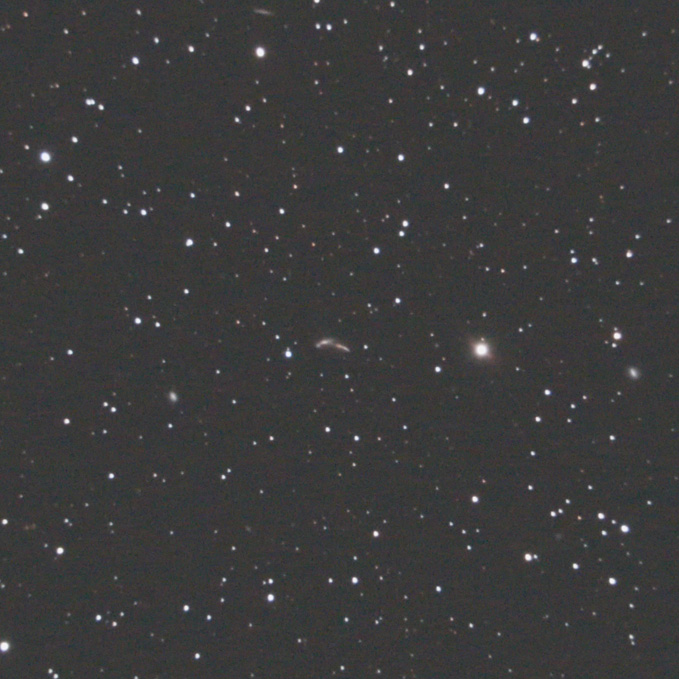| NGC6670 / Galaxy, type type Triple System |
|---|
| R.A. | 18h 33m 37.4s (2000.0) |
|---|
| Dec. | +59°53' 22" (2000.0) |
|---|
| Apparent Size | 0.9×0.4' |
|---|
| Radial Velocity | +8512km/s |
|---|
| Magnitude | 15.1 |
|---|
| Distance | 401 million light yrs. |
|---|
| Group of Galaxies | - |
|---|
| Other IDs | UGC 11284, CGCG 301-31
MCG +10-26-44, PGC 62033
IRAS 18329+5950 |
|---|
This image captures a very small but unique interacting galaxy pair located about 3 degrees northeast of ξ Draconis, which forms the head of Dragon.
The two elongated galaxies are in collision, causing them to distort into a shape resembling leaping dolphins.
The eastern and western galaxies are distinguished as NGC6670E and NGC6670W, respectively.
Detailed images with the Hubble Space Telescope confirm the presence of star-forming regions induced by the collision.
With a total span of only about 1 minute, capturing them with an amateur telescope is quite challenging.
The distance from the Milky Way Galaxy is estimated to be about 400 million light-years.
|

